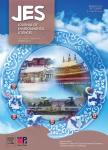Wastewater degradation by iron/copper nanoparticles and the microorganism growth rate
Wastewater degradation by iron/copper nanoparticles and the microorganism growth rate作者机构:Earth System Science and Technology Interdisciplinary Graduate School of Engineering Sciences Kyushu University Department of Chemical Engineering Faculty of Engineering Cairo University
出 版 物:《Journal of Environmental Sciences》 (环境科学学报(英文版))
年 卷 期:2018年第30卷第12期
页 面:19-31页
核心收录:
学科分类:083002[工学-环境工程] 0830[工学-环境科学与工程(可授工学、理学、农学学位)] 07[理学] 08[工学] 0703[理学-化学] 070301[理学-无机化学]
基 金:supported by Kyushu University Japan and the Japanese Ministry of Education Culture Sports Science and Technology(MEXT)
主 题:Iron bimetallic Wastewater biodegradation Bacterial life Contaminants removal
摘 要:Nowadays, trends in wastewater treatment by zero-valent iron(ZVI) were turned to use bimetallic NZVI particles by planting another metal onto the ZVI surface to increase its reactivity. Nano size zero-valent iron/copper(NZVI/Cu0) bimetallic particles were synthesized in order to examine its toxicity effects on the wastewater microbial life, kinetics of phosphorus, ammonia stripping and the reduction of chemical oxygen demand(COD).Various concentrations of NZVI/Cu0 and operation conditions both aerobic and anaerobic were investigated and compared with pure NZVI experiment. The results showed that addition10 mg/L of NZVI/Cu0 significantly increased the numbers of bacteria colonies under anaerobic condition, conversely it inhibited bacteria activity with the presence of oxygen. Furthermore,the impact of nanoparticles on ammonia stripping and phosphorus removal was also linked to the emitted iron ions electrons. It was found that dosing high concentration of bimetallic NZVI/Cu0 has a negative effect on ammonia stripping regardless of the aeration condition. In comparison to control, dosing only 10 mg/L NZVI/Cu0, the phosphorus removal increased sharply both under aerobic and anaerobic conditions, these outcomes were obtained as a result of complete dissolution of bimetallic nanoparticles which formed copper-iron oxides components that are attributed to increasing the phosphorus adsorption rate.



